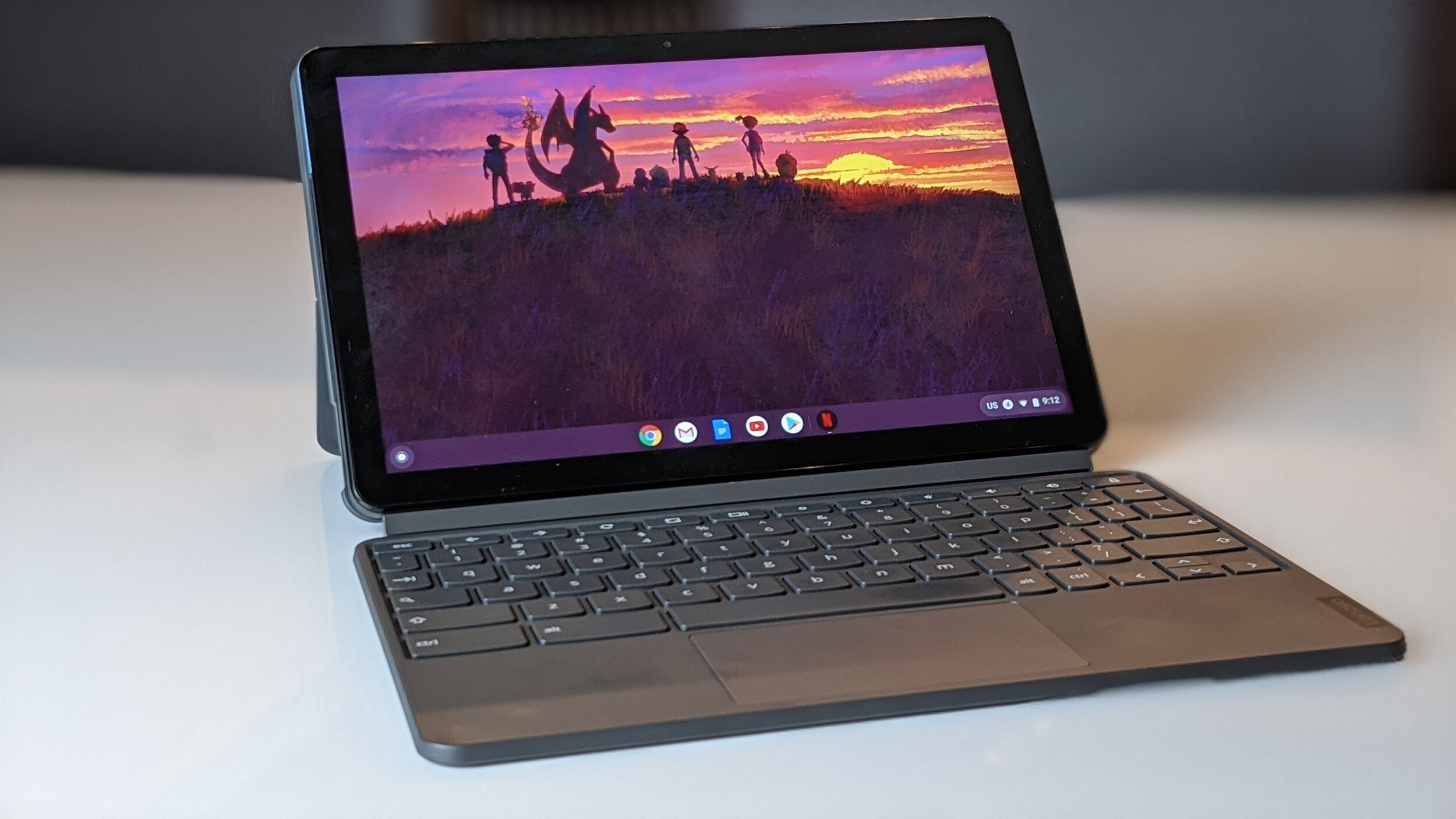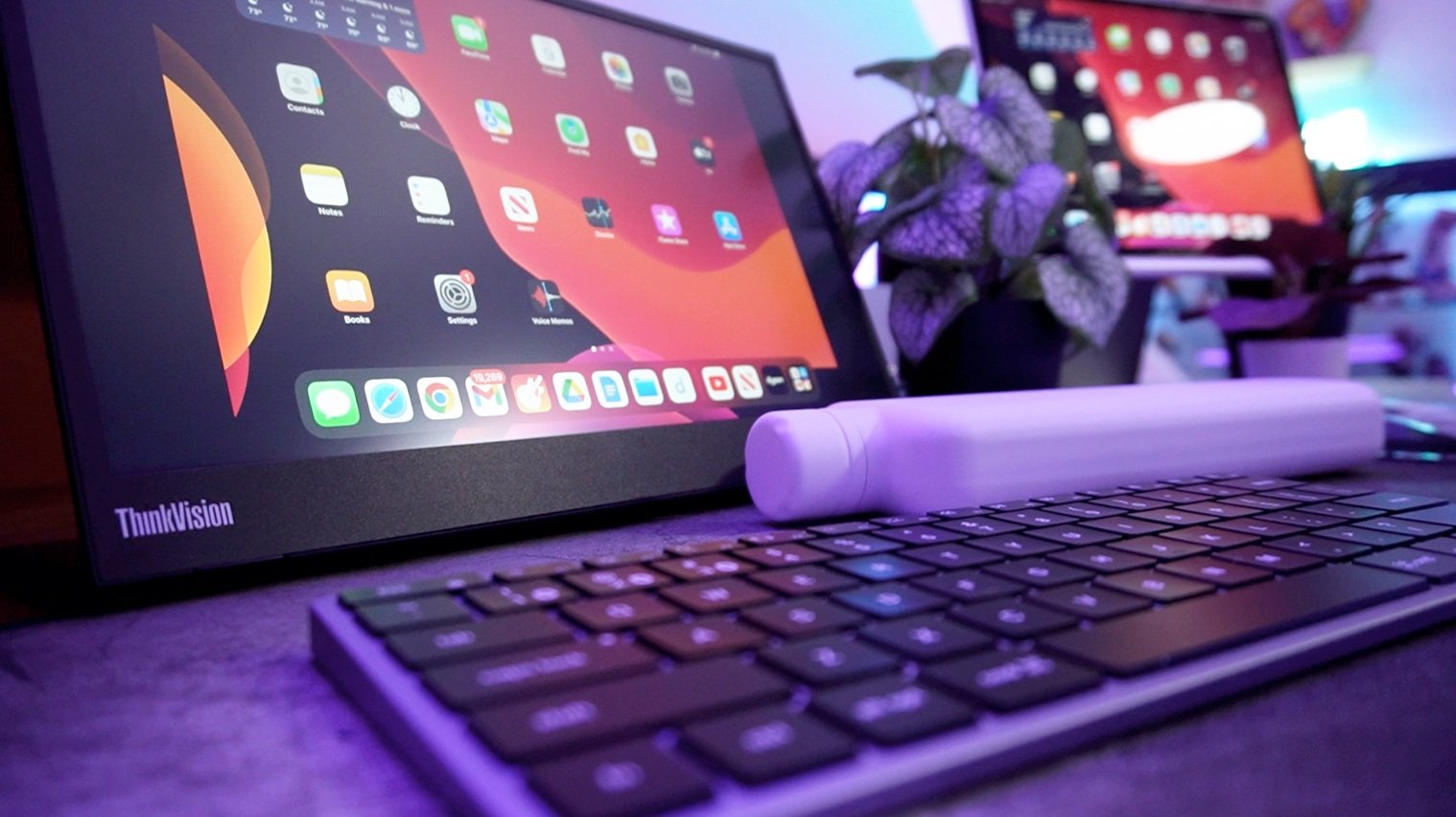Lenovo 2-in-1 Chromebook Duet Review: Setting the Bar
Purchase Price: $279
Buy on Amazon
We are a participant in the Amazon Services LLC Associates Program, an affiliate advertising program designed to provide a means for us to earn fees and support our channel by linking to Amazon.com and affiliated sites.
Product Specs +
- 10.1" FHD 1920 x 1200 IPS display
- MediaTek Helio P60T Processor
- Chrome OS
- ARM G72 MP3 800GHz Graphics
- 4 GB of Memory
- 128 GB of Storage
Camera Specs +
Rear Cameras
- 8 MP auto-focus
Selfie Cameras
- 2 MP fixed-focus
For many years, laptop computing was a two horse race. Microsoft Windows laptops and Apple Macbooks dominated sales and consumer trust for nearly every possible computing need a person may have. That’s no longer the case as Google has forcibly fought their way into the competition with ChromeOS. Offerings utilizing the search giant’s software seriously need to be considered by just about anyone looking for a new laptop in 2020. With the abundance of Android apps powered by the Google Play Store, Linux and the simplicity of Chrome OS itself, these laptops are developing into the pinnacle of mobile computing. The Lenovo Chromebook Duet is a combination of years of evolution into what is finally a viable platform.
A Competitive Price
Let’s start off by discussing the $279 price point the Duet sells at. Setting the actual specs aside for now, I truly believe the build quality alone warrants this price tag. Within minutes of holding the tablet hybrid in my hand, I instinctively knew this device was going to be special. I’ve used many chromebooks since the inception of the OS so I’m plenty educated about the history of cheap chromebooks. This product is a hallmark chapter for Chromebooks. Using an aluminum alloy slab as the build material, the Duet feigns a luxury aura thanks to a beautiful dual colored combination back. The top quarter of the device is isolated with a soft matte baby blue colored accent (Lenovo calls it Ice Blue) that is totally unnecessary but completely welcomed. Small details like this add to the illusion of a higher price point. This look and feel is what I would have originally envisioned the Google Pixel Slate to have looked like if they kept with the window back design on the original Google Pixel phones. I love this look and color combination.
My praise for the design doesn’t end with just the appearance either. Unlike the Microsoft Surface Go or a base Apple iPad, the Chromebook Duet ships with an attachable magnetic keyboard and back case at no additional cost. ChromeOS is a computing platform first and foremost and a functional Android tablet only as a second nature. That’s exactly how it should be for this platform and I adore Lenovo for honoring this unique trait. Google themselves botched this with the Pixel Slate and Acer did as well with the Chromebook Tab 10 by selling a device with no keyboard. Chromebooks have a truly distinct identity that sets it apart from iPadOS or even Microsoft with their Windows S and the keyboard is their ace in the hole.
A Good Display
While the included keyboard itself is far from what I’d consider ideal, it’s plenty usable for just about anyone. It’s true that the keys are very cheap feeling and narrowly spaced due to the compact form factor. After all, the entire keyboard has to be folded into the 10.1 inch body of the tablet. This makes for some extremely awkward finger situations when trying to hit the backspace key that is a ¼ of the shape of a regular keyboard. The same goes for the plastic trackpad. It’s narrow and flimsy yet still serviceable. It’s responsive and reactionary to gestures albeit not very pleasing to use. However, once again, because it’s included in the $279 MSRP, I’m absolutely fine with the level at which it performs.
As for the tablet screen itself, the Duet does a great job of providing a great viewing experience utilizing a 10.1 inch 1920 x 1200p display. Colors are sharp without providing exaggerated shading in hue. It also uses a 16:10 aspect ratio that displays videos more naturally than on a squarish tablet. You do have a bezel surrounding the screen that houses the front facing camera. While it may be a bit thicker than some would like it to be, I don’t find it intrusive to the experience here. The display from a distance looks clean and vibrant. I’m plenty satisfied with it for this price.
What doesn’t hold up is the performance of the Duet. With a combination of the MediaTek Helio P60T processor, 4 GB of RAM and 128 GB of storage, the specs alone already warrants worry for potential slow downs. This particular MediaTek processor is obviously a budget offering from the chipmaker and one aspect that Lenovo decided to incorporate in order to keep costs down. This is an interesting case where an OEM decided to invest in the build quality instead of the actual performing experience. While the device is plenty usable, it reveals its limitations rather quickly. By that I mean when you start racking up chrome tabs or opening Android apps that are more graphically intensive, the Duet takes a noticeable dip in speed. Content takes longer to load while games stutter and drop frames on occasion. It never gets to the point where the experience is unbearable, but I can’t say it’s a fluid time either.
As a 2 in 1 Chromebook, the Duet functions primarily as a laptop when docked into the keyboard and magnetic back casing. The rear case slaps onto the aluminum back and holds steady without risk of undocking unless it’s your intent. I quite enjoyed the look and feel of the fabric magnetic casing. It reminded me of the Google OEM fabric cases for the Pixel phones. Unlike the Surface Go’s, the pop out kickstand isn’t built into the tablet. Instead, the folding out mechanic is incorporated into the case. It’s flexible for varying viewing angles that reliably keep the tablet propped up. By designing it this way, the tablet itself is just one thin sheet of aluminum alloy.
On top of the tablet being very thin in it’s naked form, it surprisingly houses a very capable battery. At 7,000 mAh, Lenovo estimates 10 hrs of usage with the Duet. I played 9 consecutive hours of Legends of RuneTerra to which I was pleasantly impressed with how it survived my gaming screen on time. That’s some good battery life for a device this portable. In addition to being good for long gaming sessions, the Duet also adds stereo speakers on the top of the tablet in landscape mode. While the audio emitted doesn’t provide much substance or volume, it also isn’t hampered by any fan noise you’d get from other laptops. It was a neutral experience for me at best. Unfortunately there is no headphone jack to connect earphones to as there is only one port on the entire device: the USB Type-C port. You won’t be mounting harddrives or SSD’s to this laptop and that’s fine by me.
Overall Thoughts
I went into this review with every intention of using the Chromebook Duet as my daily driving laptop. While it succeeds in satisfying my entertainment needs quite well, I did have a hard time sustaining a constant workflow using this as a device to accomplish tasks in order to pay the bills. The main culprits that deterred my experience were the smaller keys on the keyboard and the budget processor. I found myself forgetting at times that the Duet is only a $279 because it's just so beautifully built. However, at its core, it will eventually reveal its true capabilities once you start using it. Regardless, this is one of those products that will change the market in the long run. No OEM has any excuse anymore to offer a Chromebook for under $300 relying on a less than 1080p display and plastic build materials. Those days are gone now and the Chromebook Duet is the new bar.















Alex
Caught in between the conundrum of his fascination with retro and the future, Alex has a very unique taste in technology. Never one to follow trends like his millennial peers yet constantly desiring to get ahead of the curve, he sees technology like he does his other love: comic books. Always looking for the best value or a hidden gem, his collector mindset reflects on some of his favorite gadgets: the Moto X (2015), HTC U11 and the Google Pixelbook. If there’s a good tech deal out there, Alex is on the hunt!